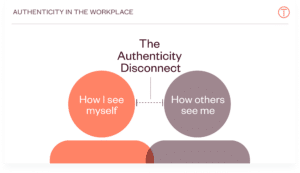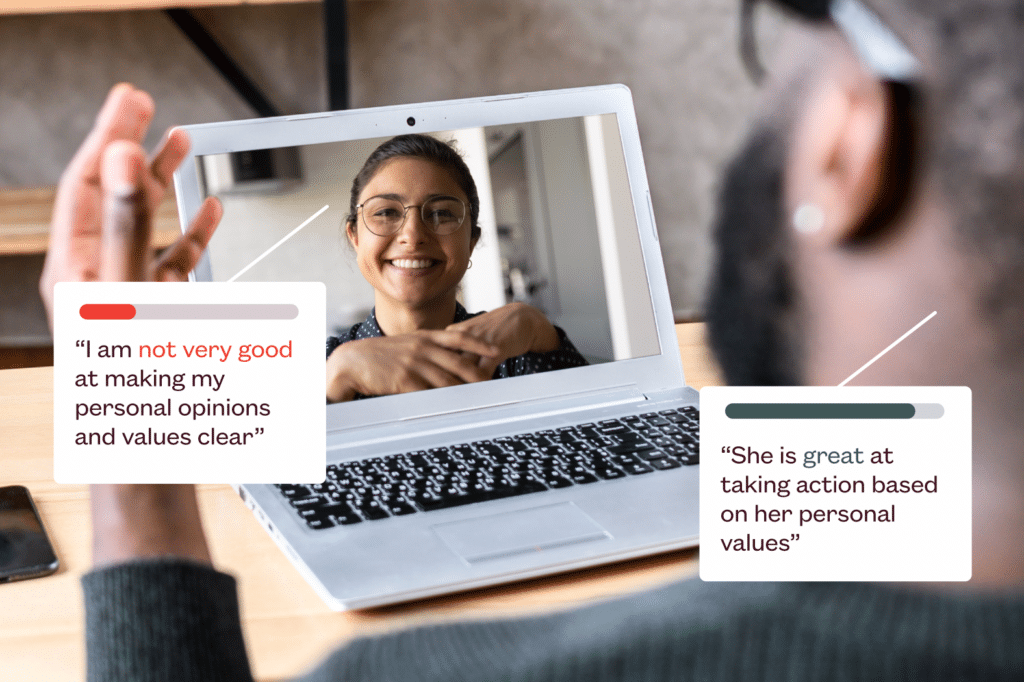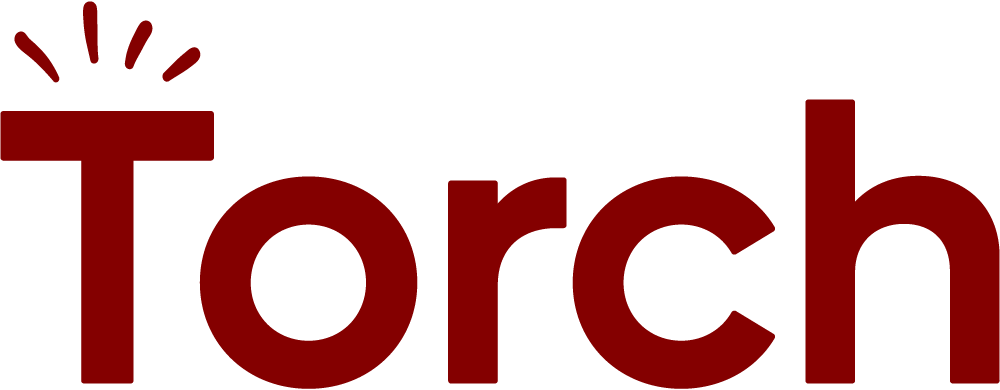Uncovering the overlooked barriers to authenticity at work, and how to face them as individuals, and organizations.
How do you want to show up in 2022?
For some of us, the New Year is a moment to introspect – to make a clear-eyed assessment of where we’re at, and how we want to change over the next 365 days. For me, it’s an opportunity to resuscitate a resolution I’ve had for years: be more authentic at work. In other words, staying true to myself by shrinking the gap between what I think and how I act, and incorporating my personal values into day-to-day behaviors.

Authenticity Disconnect
Why does this matter? Research suggests that our capacity to be authentic—and to be perceived that way—can have powerful implications for professional growth and organizational success. For instance, encouraging and cultivating authentic identities at work is associated with stronger relationships and higher retention. And yet, despite how often organizations today trumpet the importance of bringing your “whole self” to work as if it was as straightforward as packing a lunch, our data at Torch suggests this quest continues to prove challenging for many of us, illustrating a pervasive disconnect between how we intend to show up, and the way other people see us. Why is that the case?
The answer is multi-faceted, but research and history highlight a couple of barriers to authenticity that are easily overlooked: first, becoming more authentic is often seen as a responsibility rooted in individuals, ignoring behavioral science that suggests a more complicated story. Second, our identities can powerfully – and sometimes invisibly – influence how easy it is for us to show up authentically.
Let’s start to unpack this by traveling (briefly!) back in time, to better understand how we came to value, and struggle with, authenticity at work.
What History Tells Us About the Challenge of Authenticity
As an aspirational ideal, authenticity has been challenging us for centuries. Think of Shakespeare’s lines “to thine own self be true,” and “all the world’s a stage,” or the philosopher Kierkegaard’s directive to “become what one is.” Philosophers, artists and social scientists have long questioned how it can be achieved, whether it can be measured, and if it is imbued with an inherent morality. And even before the rise of social media, we were worried that our authentic selves were somehow getting lost. “…We as individuals and as a culture have become increasingly concerned that we are no longer able to find the “real me,” let alone the “real you,” sociology professor Rebecca J. Erickson wrote in 1995.
The concept of authenticity emerged in its modern form around the mid-1900s, when some social scientists first began to theorize about the gap between the way we act in the world, and who we really are. Erickson suggests part of the reason we became so interested in this divide was because of the rise of mass culture: suddenly, movies, TV and advertisements gave us access to lots of attractive identities and selves we could play around with in our lives, making the ways we defined ourselves relative to our communities and families – and the collective values we held through religious and other traditions – less central and solid.
How Authenticity Helps Individuals, and Organizations, Get Stronger
Fast forward to 2002. Researchers introduced a way to measure and conceptualize authenticity, emphasizing something important – that it’s fundamentally linked to self-awareness. We can only be true to ourselves when we are intimately aware of our strengths and weaknesses. Since then, researchers continue to demonstrate that pursuing authenticity is a prerequisite for behaviors central to the success of both individuals and organizations: interpersonal connection and growth.
Authenticity has the power to strengthen our interpersonal relationships by helping to establish trust through vulnerability. In his book On Becoming a Person, the psychologist Carl Rogers, the progenitor of modern psychotherapy, describes a close cousin of authenticity – the concept of congruence – as being essential to a client’s ability to connect and grow in a therapeutic context. Congruence, he writes, is when our experience, awareness, and communication are all aligned.
While the mechanisms that underlie congruence can be complex, Rogers suggests that we often can intuit whether someone else is being congruent. “With some individuals we realize that in most areas this person not only consciously means exactly what he says, but that his deepest feelings also match what he is expressing… With another individual, we recognize that what he is saying is almost certainly a front, a façade. We wonder what he really feels. We wonder if he knows what he feels. We tend to be wary and cautious with such an individual.”
The Overlooked Barriers to Authenticity
Rogers helps to illuminate the first barrier to authenticity at work: though authenticity is an individual feeling and experience – it’s enacted in environments and through relationships. It is also both felt by me, and perceived by others. That means even though I can develop behaviors to feel more authentic, my abilities may be constrained or enabled by my environment, and by the interpretations of my peers.
This constraint can be particularly acute, and harmful, for individuals with particular identities – namely, members of historically marginalized and underrepresented groups. Take, for instance, the experience of some Black women who cannot authentically express anger, or other strong emotions, in the workplace: the stereotype of the “angry Black woman,” and the ways in which Black women are penalized for emotional expressions, mean that many will rationally decide to suppress their true feelings.
Indeed, the bring your whole self to work movement “can be a form of institutional gaslighting,” Courtney McCluney, assistant professor of organizational behavior at Cornell University, told me. “It assumes that the workplace environment and culture people already have is one where people would feel comfortable presenting their whole self, and not just what’s considered acceptable to dominant groups,” she said. “It also presumes there’s an acceptance and welcoming of cultural differences that are underrepresented and have been systematically excluded.”
How We Overcome the Barriers – As Individuals, and Organizations
Becoming more authentic, then, is not a journey that any of us can take completely alone; it must be a quest we take alongside our managers, mentors, coaches and peers. In other words, if we want to be more authentic, we – especially organizational leaders – must create cultures of authenticity. A culture of authenticity values psychological safety and individual agency. It enables us to freely choose how we want to show up at work – which parts of our self we want to bring, and which parts we want to leave behind.
One way to begin creating cultures of authenticity is to extend the accommodations and resources historically reserved for one group to the broader organization, normalizing the uptake and usage, suggests McCluney. A small but powerful example: making transcripts an automatic part of meetings and webinars on Zoom, something that helps not only people who are hard of hearing, but also people for whom English may not be their native language. Another example – being careful to not ask an individual from an underrepresented group to speak on behalf of all members of that particular group. This can lead to the spotlight effect, where an individual becomes hyper-aware of their divergent identity, and may feel less comfortable with expressing their differences as a result.
Within a culture of authenticity, we can begin to show up authentically as individuals. Here, a key first step is becoming more self-aware. When my behavioral scientist colleagues Lorien Elleman and Mandy Varley dug into our 360 assessment data across users at Torch, they found that authenticity is the domain where our self-assessments are the least likely to be aligned with colleagues. That means my perception of how authentic I am, and your perception of it, are likely to be different than assessments coming from other behavioral domains. But they also found authenticity is on average a hidden strength, meaning that colleagues believe users are behaving more authentically than users’ self-reported assessments.

Taken all together, this points to an authenticity disconnect between what I feel and what the outside world perceives. This makes some sense. After all, only we know how we intend to show up at work, but don’t always have the context of how others are experiencing or interpreting those intentions.
This disconnect also tells me that while many of us may act in ways that convey authenticity, we know, deep down, that we’re not being as true to ourselves as we might like to be.
Luckily, there are several ways we can address this disconnect. A 360 assessment is one tool to gain self-awareness – a key step in the quest to become more authentic – along with working with a coach or mentor. At Torch, we’ve found that coaching contributes to a change in perceptiveness that is equivalent to one decade of “natural” growth. This means going through coaching compresses the time it would take you to become more perceptive and self-aware without it, giving us insights into how others are interpreting our behaviors and intentions.
Other simple steps you can take include asking colleagues for feedback on key elements of authenticity – for ex: how much others see you as behaving in line with your values – and by checking in with yourself at the end of the day to take stock of how, when, and where you felt most authentic, or inauthentic. By beginning to write these experiences down, you may begin to see patterns.
As for my resolution, I’m kicking off this year by talking to an expert on authenticity, both for individuals and organizations: Holley M. Kholi-Murchison. She’s the author of the fantastic book Tell Me About Yourself, a practical guide to redefining how we tell our stories. And she’s the type of person who makes you want to write down everything she says, because it’s so packed with wisdom. I’d love for you to join us, as we talk about how to cultivate authenticity at work, and how leaders can create cultures of authenticity.
*Editor’s note: This webinar originally aired January 20th, 2022. Click here to watch the on-demand recording of Elizabeth and Holley’s live session.


